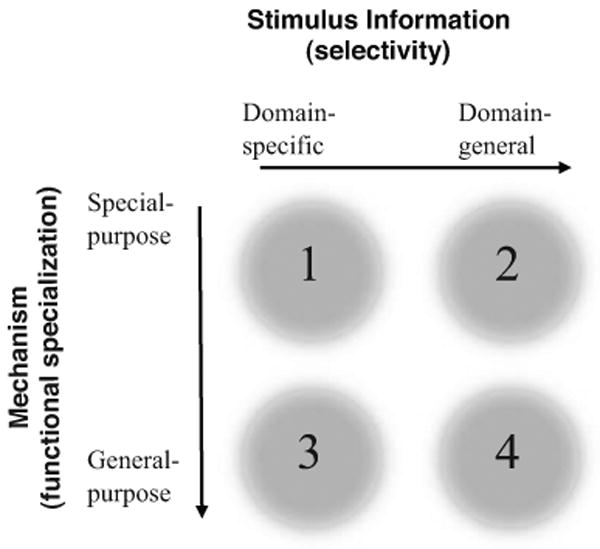Figure 1.

Is social cognition special? Debates about the modularity of social information processing often revolve around the two dimensions shown in this schematic: Is the specialization at the level of processing algorithms (functional specialization) or at the level of the type of information being processed (stimulus selectivity)? A mechanism might be functionally monolithic and apply to a restricted set of stimuli (region 1) or applicable to a large domain of different kinds of stimuli (region 2). Alternatively, a mechanism might contribute to several distinct processes, but in the service of processing either a restricted stimulus class (region 3) or many (region 4). (Modified from Atkinson et al. 2008, Wheeler & Atkinson 2001.)
